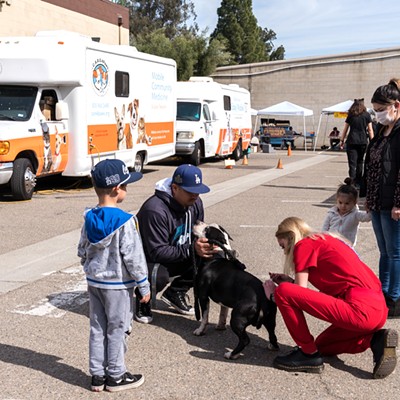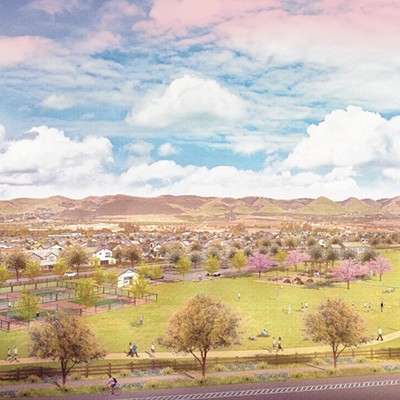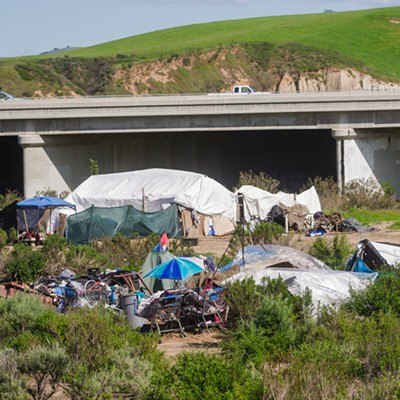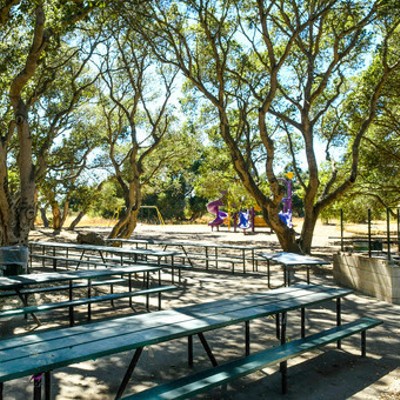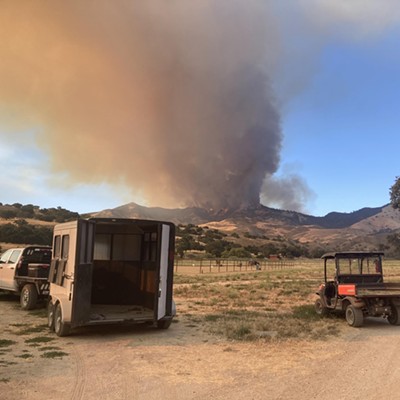Santa Maria is about 100 acres shy of meeting its parks-to-residents ratio—3 acres of accessible park or open space land for every 1,000 residents—but officials said the city needs more cash from developers to hit the target.
Typically, fees levied against new housing developments fund Santa Maria Recreation and Parks’ purchasing power. Developers either build a park that fills the recreational needs of each project’s future residents or pay the city in-lieu funds. Recreation and Parks Director Alex Posada said that the formulas that have worked in the past are no longer sufficient.

“Theoretically, that money is supposed to be enough to acquire the land and build a park, but it never is,” Posada told the Sun. “Land has a value to it, and that’s usually the biggest component of each project’s cost.”
In the last Santa Maria City Council meeting of 2022, council members set a path to potentially change the formula for one of the three fees it charges developers for parks development—the subdivision in-lieu fee. During that Dec. 20 meeting, the council voted 3-1, with Mayor Alice Patino absent and new City Councilmember Maribel Aguilera-Hernandez opposed, to increase the fee by 16.2 percent and have staff come back in the future with recommendations for further increasing revenue from the fee.
While Aguilera-Hernandez felt it would be prudent to get the information they need before changing anything, Councilmember Gloria Soto said it would be better to move forward with a fee increase immediately before the city gets even further behind. Councilmember Mike Cordero agreed.
“Ms. Soto’s motion puts us in the driving seat sooner, gets us going sooner, and we can make up this deficit, hopefully in a timely manner,” Cordero said at the meeting. “My aim would be to make sure there’s additional dialogue with developers and we can get this going as quickly as possible.”
That vote increased the subdivision in-lieu fee from $2,379 per unit to $2,764—a percentage that’s equal to the changes in the Construction Cost Index from 2019 to 2021. The vote also set the value of a developable acre of land to $390,000 and increased the minimum dedication of prime park land for developers from 3 acres per 1,000 future residents to 5 acres.
The value of a developable acre of land, the number of acres required per 1,000 residents, and the average number of residents per unit all go into the formula the city uses to charge developers the subdivision in-lieu fee. Aguilera-Hernandez said the state’s average number of residents per unit—3.7—doesn’t work for Santa Maria.
“The number of people per Santa Maria household is higher than the state average,” she said at the meeting. “We have more people living in one-bedroom apartments.”
City Attorney Thomas Watson advised the council that the city could set the fee based on local conditions, including things like the cost of land and the average number of residents per household. Everyone on the City Council agreed that the city needed to do more research to determine what Santa Maria’s actual average household size is.
Laurie Tamura with Urban Planning Concepts disagreed with the city’s assessment of its parks deficit. During public comment, she said that the city needed to stop and take a breath to look at the cumulative impact of fee increases on developers and future housing affordability.
“The city of Santa Maria has been very successful in development and growth of the city in providing the matching funds to build all of the infrastructure that has been built over the course of the last 20 years,” Tamura said, adding that the city’s Los Flores Ranch Park isn’t included in Santa Maria’s park acreage. “You have a resource that is highly used by the city of Santa Maria and that is not included in these numbers … and it should be included in these numbers because the city residents benefit from that.”
Rec and Parks Director Posada told the Sun that parks and open space acreage needs to be accessible to residents, which is why Los Flores’ 1,800 acres weren’t included in the numbers presented at the meeting.
“If it’s 12 miles away, then it’s not close to the neighborhood,” Posada said. “The requirement is that the land be accessible.”
Recreation space should be within 10 walkable minutes of residents, Posada said, adding that the 2019 Leisure Needs Assessment showed that city residents’ most desired amenities are trails/pathways, community/neighborhood parks, and athletic fields.
When developers don’t build parks as part of their development plans, the city does its best to build parks that are close to new developments. Acquistapace Park, the city’s newest park, opened in 2021 and was built to service the recreation needs of Harvest Glen residents. The city spent $700,000 on construction, part of which came from the subdivision in-lieu fund. Posada said that fund helps build new parks and/or update facilities in the city’s existing 28 parks, which total 243 acres.
Although the city used to share property with schools, that access is now fenced off due to school security needs, so the recreation space—sports fields and playgrounds—is no longer accessible.
Santa Maria Recreation and Parks is trying to address some of residents’ leisure needs with a 19.2-acre sports facility on Depot Street between Battles and Stowell roads. Rec and Parks is also adding to the Santa Maria River Trail with 250 acres of open space the city now owns near the end of North Broadway and building pocket parks.
The city is still negotiating the sports park property purchase with the developer, Posada said, but will be paying for it with the help of a $6.5 million state grant, $1.5 million from Santa Barbara County, and about $1 million either from the city’s subdivision in-lieu fee fund or growth mitigation fund.
Posada said that the city wants to incorporate its 250 acres of open space along the river into its outdoor education program because it’s a wildlife corridor with lots of birds and animals moving up and down the river.
A 6,000- to 7,000-square-foot empty lot on north Dejoy Street that once held a pump station will become a pocket park in 2023, Posada said. The city designed it with neighborhood input and is aiming to do the same where north Miller Street dead ends.
“That’s the plan for trying to address some of the northside neighborhoods that don’t have parks close by,” Posada said. “It’s basically so people have a place to go to be outside and so the kids don’t have to play in the street.”
Reach Editor Camillia Lanham at [email protected].



